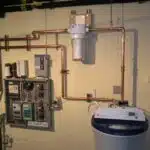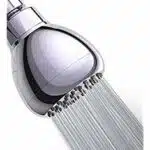Maintaining the correct alkalinity level in a swimming pool is essential for ensuring its cleanliness and safety. Alkalinity refers to the ability of water to neutralize acids, and proper levels can help prevent corrosion of pool surfaces, ensure efficient chlorine disinfection, and maintain the comfort of swimmers. As a pool chemist, it is important to understand how to raise the alkalinity in a pool when necessary.
There are several factors that can affect the alkalinity levels in a swimming pool, including rainfall, evaporation, and chemical treatment. Low alkalinity can lead to cloudy water, skin irritation, and reduced effectiveness of chlorine disinfection. In this article, we will explore some effective strategies for increasing alkalinity levels in your swimming pool while also considering other important factors that contribute to maintaining a healthy swimming environment. By implementing these strategies, you can ensure that your pool is always clean and safe for swimmers.
Understanding Alkalinity In Pools
The importance of alkalinity in maintaining a healthy and safe swimming pool cannot be overstated. Alkalinity measures the ability of pool water to resist changes in pH, which is critical for preventing corrosion of pool equipment and surfaces, as well as ensuring that chlorine and other sanitizers work effectively. A balanced alkalinity level also helps to prevent eye and skin irritation, making it essential for the overall enjoyment of swimmers.
Testing methods for alkalinity levels in pools vary depending on the type of test kit used. The most common method involves using test strips that are dipped into the pool water, with the color changes indicating the level of alkalinity present. Another option is to use a digital tester that provides more precise readings. Regardless of the method used, it is important to test regularly, particularly after adding chemicals or if there are noticeable changes in water quality.
As a pool chemist, it is crucial to understand the significance of maintaining proper alkalinity levels in a swimming pool. By doing so, you can ensure that your clients’ pools remain clean, healthy and enjoyable for all who use them. Additionally, knowing how to test for alkalinity and interpret results accurately will enable you to take appropriate action if levels fall outside recommended ranges. In the following section, we will explore some factors that can affect alkalinity levels in pools and how they can be managed effectively.
Factors Affecting Alkalinity Levels
Understanding alkalinity in pools is crucial for maintaining water balance and ensuring swimmers’ safety. Alkalinity refers to the measure of the pool’s ability to resist changes in pH levels. Low alkalinity can cause pH levels to fluctuate, leading to corrosion of pool equipment and skin irritation for swimmers. On the other hand, high alkalinity can make it difficult to adjust pH levels, causing cloudy water and reducing chlorine effectiveness.
Factors affecting alkalinity levels in pools are numerous. One significant factor is the source of fill water used to maintain pool water levels. If the fill water has high alkalinity, it will increase the pool’s total alkalinity level over time. Another factor is the use of certain chemicals like algaecides or acid-based products that affect the overall chemistry of the pool water. Furthermore, environmental factors such as rainfall or windblown debris can introduce contaminants into a pool that may impact its alkalinity level.
Methods for adjusting pool alkalinity include adding sodium bicarbonate (baking soda) or sodium carbonate (soda ash). Baking soda is commonly used as it not only raises alkalinity but also acts as a buffer against pH fluctuations. Soda ash, on the other hand, raises alkalinity without affecting pH levels and should be used with caution when adjusting a pool’s chemistry. In general, it is best to adjust pool chemistry gradually over several days to avoid drastic changes that could shock swimmers and damage equipment.
Maintaining proper alkalinity levels is essential for keeping your swimming pool safe and enjoyable for all users. Proper maintenance ensures balanced water chemistry that prevents skin irritation or equipment damage while allowing chlorine to function effectively against bacteria and algae growth. Neglecting proper maintenance could lead to costly repairs down the line or even illness among swimmers due to chemical imbalances in your swimming pool water.
Importance Of Maintaining Proper Alkalinity
Maintaining proper alkalinity is crucial to the overall health of a pool. Alkalinity refers to the water’s ability to resist changes in pH levels. It acts as a buffer, preventing rapid pH fluctuations that can damage pool equipment and irritate swimmers’ skin and eyes. Pool owners must have a solid understanding of how to maintain proper alkalinity levels to ensure their pools remain clean, clear, and safe for use.
Ignoring imbalances in alkalinity can lead to serious consequences. When the alkalinity levels are too low, pH levels become unstable, causing chlorine to lose its effectiveness in killing bacteria and algae. This situation can lead to cloudy water, foul odors, and an increased risk of infection for swimmers. Conversely, when alkalinity levels are too high, scaling may occur on the pool’s surface or plumbing fixtures due to excess calcium buildup.
To avoid these issues, it is essential to conduct regular testing of your pool’s alkalinity levels. Regular testing ensures that you keep your pool within the recommended range of 80-120 ppm (parts per million). By monitoring your pool’s alkalinity closely, you can prevent costly repairs and ensure that swimmers have a safe environment in which to enjoy themselves.
- Here are five reasons why maintaining proper alkalinity is essential for maintaining a healthy swimming pool:
- Prevents damage to pool equipment
- Maintains stable pH levels
- Increases the effectiveness of chlorine
- Decreases the risk of infection for swimmers
- Avoids costly repairs
As we have seen above, maintaining proper alkalinity is essential for your pool’s health and longevity. In addition, it helps create a safer environment for swimmers by avoiding harmful bacteria growth that can lead to infections. In our next section, we will discuss how to test your pool’s alkalinity levels accurately so that you can take timely corrective measures if necessary.
Testing Alkalinity Levels
Maintaining proper alkalinity in a pool is crucial to ensure its longevity and the safety of swimmers. Alkalinity acts as a buffer, preventing sudden changes in pH levels that can cause skin irritation, equipment damage, and water discoloration. When the alkalinity level is too low, the pH level becomes unstable, making it difficult to maintain chlorine levels at an optimal range for disinfection. In contrast, when the alkalinity level is too high, it can lead to cloudy water and scaling on pool surfaces.
To test alkalinity levels, pool owners can use either alkalinity test strips or DIY alkalinity testing kits. Alkalinity test strips are easy to use and provide quick results, but they may not be as accurate as DIY testing kits. The latter typically includes a set of chemicals that need to be added to a water sample taken from the pool. The kit will then indicate the alkali content through a change in color or by measuring the acidity of the sample.
Once you have determined that your pool’s alkalinity needs adjusting, preparing to raise it requires some basic steps. First, make sure that your pool’s pH level is within the recommended range of 7.2-7.8 before adding any chemicals to adjust alkalinity levels. Next, check your chlorine levels, as high chlorine levels can affect how much of an impact any added chemicals may have on raising your pool’s alkalinity levels. Finally, choose an appropriate method for increasing your pool’s alkaline content based on its size and current chemical composition – sodium bicarbonate (baking soda) or sodium carbonate (soda ash) are common choices for raising alkalinity levels depending on specific needs and conditions.
Transitioning from testing alkalinity levels to preparing for raising them requires care and attention to detail in order to maintain optimal conditions for swimmers while keeping equipment safe from damage caused by unstable chemical compositions in pools.
Preparing To Raise Alkalinity
Proper pool maintenance requires regular testing of the water to ensure that the levels of chemicals are within safe and optimal ranges. This is particularly important when seeking to raise the alkalinity in a pool. Testing for alkalinity levels is crucial because it affects the pH level of the pool, which, if left unchecked, can cause skin irritation, corrosion of fixtures and equipment and decrease chlorine effectiveness.
To prepare for raising alkalinity in a pool, it’s crucial to have proper equipment at hand. Investing in a good quality testing kit will ensure accurate readings of pH and alkalinity levels. A chemical dispenser will also come in handy as it allows for controlled release of chemicals into the water. Alternatively, one can use gloves to protect their hands while adding chemicals directly into the pool.
In summary, preparing to raise alkalinity requires proper testing equipment and accessories. Safety should be paramount when handling chemicals as they can pose significant health risks if mishandled or used improperly. In our next section, we’ll explore how adding baking soda can help increase alkalinity levels in your pool without affecting other chemical balances.
Adding Baking Soda To Increase Alkalinity
To effectively maintain a pool, it is crucial to measure the alkalinity levels regularly. The ideal range for alkalinity lies between 80-120 ppm (parts per million). If your pool’s alkalinity is too low, it may cause corrosion on metal surfaces or damage to the plaster finish of the pool. Conversely, high alkalinity levels may lead to scaling in your pool, making it difficult to clean and maintain.
One natural solution for increasing alkalinity in a pool is by adding baking soda (sodium bicarbonate). This household item can be bought from any grocery store and works wonders in balancing your pool’s pH levels. Typically, you will need to add about 1.5 pounds of baking soda per 10,000 gallons of water to raise the total alkalinity by 10 ppm. However, always measure the amount of baking soda required based on your specific pool size and current alkaline level.
In summary, maintaining proper alkalinity levels in your pool is vital for ensuring its longevity and safety. Measuring alkalinity at regular intervals has been proven beneficial as it helps identify when adjustments are necessary. Adding baking soda presents one natural solution that helps increase the alkaline level without causing harm to individuals who use the facility.
Adding Sodium Carbonate (Soda Ash) To Increase Alkalinity
To raise the alkalinity in your pool, adding sodium carbonate, also known as soda ash, is an effective solution. This alkaline substance can help bring balance to the pH levels in your pool and prevent corrosion of your equipment. Before adding soda ash to your pool, it’s important to test the current pH balance and make sure it falls between 7.2-7.8.
To properly add soda ash to increase the alkalinity in your pool, follow these steps:
- Calculate how much soda ash you will need based on the size of your pool and desired increase in alkalinity.
- Dilute the soda ash in a bucket of water before pouring into the pool.
- Slowly pour the diluted mixture around the perimeter of the pool while running the pump to ensure proper distribution.
- Wait several hours before retesting the pH level and repeating if necessary.
As a pool chemist, it’s important to understand how different chemicals affect water chemistry and how they interact with each other. Maintaining proper alkalinity levels is essential for keeping a healthy and balanced swimming environment for users while also protecting expensive equipment from damage.
Next, we will discuss using alkalinity increaser products as another option for increasing alkalinity levels in your pool without affecting pH balance.
Using Alkalinity Increaser Products
After adding sodium carbonate to increase alkalinity in a pool, it’s important to note that there are other alternatives to consider. Alkalinity increaser products, for instance, are readily available in the market and can be used as an alternative. These products come in different forms such as granules, tablets or liquids and are easy to apply. However, it’s recommended that you follow the manufacturer’s instructions when using these products.
For those who prefer DIY solutions, there are several options available. Baking soda is one of them and can be found in most households. When added correctly, baking soda can help raise alkalinity levels in a pool. Another option is borax which contains boron- a mineral that helps raise both pH and alkalinity levels. However, it’s important to note that these DIY solutions may not be as effective as commercial products.
Ultimately, balancing alkalinity and pH levels is essential for maintaining healthy and safe pool water. It’s important to monitor the chemical balance of your pool regularly using test kits or strips. If you notice any changes in either pH or alkalinity levels, take immediate action by adjusting the chemicals accordingly. Failure to maintain proper chemical balance can lead to skin irritation, algae growth or even damage to your pool equipment. In the next section, we will discuss how to balance both pH and alkalinity levels effectively without causing any harm to your pool water chemistry.
Balancing Alkalinity And Ph Levels
How can we balance the alkalinity and pH levels of a pool? This is one of the most common questions pool owners have. Having balanced levels is essential for maintaining a healthy and inviting swimming environment.
Common misconceptions about balancing these levels include thinking that raising the pH level will automatically increase alkalinity. However, this is not always accurate. Balancing these two levels may require adjusting them separately, depending on their individual readings.
DIY alkalinity testing kits are available in many stores, but it’s important to use them correctly. Following the instructions carefully will ensure accurate results. It’s also crucial to test the water regularly to keep track of any changes and adjust accordingly before any issues arise.
Effects Of High Alkalinity
After balancing the alkalinity and pH levels of your pool, you may still experience low alkalinity. Low alkalinity can cause corrosion of metal surfaces, staining of the pool walls and floors, and a decrease in the effectiveness of chlorine. Symptoms of low alkalinity include skin irritation, itchy eyes, and difficulty breathing.
Prevention is key when it comes to maintaining proper alkalinity levels in your pool. Regular testing and monitoring of chemical levels can help prevent low alkalinity. It is recommended that you test your pool’s water at least once a week during peak swimming season. Additionally, avoiding overuse of acidic chemicals such as muriatic acid or sodium bisulfate can help maintain proper alkalinity levels.
Treatment for low alkalinity involves raising the total alkalinity level using an alkaline product such as sodium bicarbonate or baking soda. These remedies should be applied gradually to avoid overshooting the desired level. Once added, allow several hours before retesting the water to ensure proper balance has been achieved. Maintaining adequate alkalinity levels will not only prevent damage to your pool but also ensure a fun and safe swimming experience for all users.
Transition: While low alkalinity can cause issues for your pool, high levels can also have negative effects on both swimmers and the pool itself. Understanding these effects is crucial in maintaining optimal pool conditions.
Effects Of Low Alkalinity
What are the effects of low alkalinity in a pool? This is a question that many pool owners ask themselves when they notice changes in their pool’s pH levels. Low alkalinity can cause chemical imbalances in the pool, which can lead to various problems such as corrosion, staining and scaling. When the pH level is too low, it can also cause skin and eye irritation for swimmers.
Chemical imbalances in the pool can occur when the alkalinity level is too low. This is because alkalinity acts as a buffer against changes in pH levels. If there isn’t enough alkalinity in the water, then even small amounts of chemicals or other substances can cause significant changes to the pH level. When this happens, it can lead to damage to the pool equipment and surfaces.
In order to prevent these problems from occurring, it’s important to maintain proper alkalinity levels in your pool. By doing so, you will help ensure that your pool remains healthy, safe and enjoyable for everyone who uses it. In the next section, we’ll discuss some tips on how you can maintain proper alkalinity levels in your pool over time.
Maintaining Alkalinity Levels In The Long-Term
As mentioned in the previous section, low alkalinity can lead to a range of issues in your pool water, such as corrosion, staining, and skin irritation. It is important to maintain proper alkalinity levels to prevent these problems from occurring. However, simply raising alkalinity levels once is not enough. Long-term alkalinity maintenance is essential for keeping your pool water balanced and healthy.
To maintain proper alkalinity levels over time, it is important to monitor the pH level of your pool regularly. A high or low pH can cause alkalinity fluctuations, so it’s essential to keep this factor under control. Additionally, regular use of alkalinity increaser products can help prevent fluctuations and keep your levels stable. These products contain sodium bicarbonate, which raises total alkalinity without affecting pH levels.
Another way to prevent alkalinity imbalances is by avoiding overuse of chlorine or other sanitizers. High chlorine or sanitizer levels can cause pH and alkalinity fluctuations due to their acidic nature. It’s also important to avoid adding too much acid when adjusting pH levels since this can lower the total alkalinity as well. By following these tips and monitoring your pool chemistry regularly, you can prevent common issues associated with fluctuating alkalinity levels and keep your pool water healthy for swimming enjoyment.
In order to avoid unnecessary expenses due to chemical imbalance in pools, homeowners should be aware of tips for preventing alkalinity imbalances. One tip is to make sure that any chemicals are added slowly over time rather than all at once; doing so will minimize the chances of sudden changes in the water chemistry that could lead to instability or even damage over time. Another tip is keeping an eye out for any visible signs of trouble such as cloudy water or discoloration on surfaces around the pool area – if these are noticed early enough then steps can be taken quickly before they become more serious issues requiring more extensive repair work later on down the line!
Tips For Preventing Alkalinity Imbalances
Preventing Alkalinity Imbalances is crucial in maintaining the quality of your pool. Alkalinity is an essential element that should be kept within the appropriate range to prevent issues like corrosion, scaling, and cloudy water. The pH level will affect the effectiveness of chlorine and other sanitizers that keep the pool clean.
One of the most effective Alkalinity Maintenance Techniques is regular testing and balancing. Testing kits are readily available at pool supply stores or online shops. Make sure to test your pool’s alkalinity levels weekly and adjust them accordingly using chemical products like sodium bicarbonate. It’s also helpful to keep a record of each test result to track any changes in your pool’s alkalinity levels.
Another tip for preventing alkalinity imbalances is proper filtration and circulation. A well-maintained filter system will help remove contaminants from your pool water, which can affect its chemical balance over time. To ensure that your pool’s circulation system works efficiently, you must regularly clean out debris from skimmer baskets and pump strainers as part of your routine maintenance schedule.
Maintaining proper alkalinity levels in your pool requires diligence and effort, but it pays off in the long run with a healthy, sparkling blue water paradise you can enjoy all season long. Remember that prevention is always better than cure when it comes to keeping your pool in top condition.
To take it up a notch, consider professional Pool Maintenance Services for expert assistance and advice on how to maintain optimal alkalinity levels in your swimming pool. These professionals have years of experience in maintaining pools of different types and sizes, so they know exactly what needs to be done to keep your pool looking its best all year round.
Professional Pool Maintenance Services
As a pool chemist, I understand the importance of maintaining the correct chemical balance in your pool. One of the most crucial elements in this regard is to maintain the right alkalinity levels. This can be challenging for many pool owners who lack technical knowledge and expertise in water chemistry. Fortunately, professional pool maintenance services offer a comprehensive solution to all your pool maintenance needs.
Pool maintenance packages are tailored to meet your individual requirements, ensuring that your pool stays clean and healthy throughout the season. These packages include regular inspections, equipment checks, and chemical testing to ensure that your pool remains well-balanced with the appropriate pH and alkalinity levels. Professional technicians have extensive knowledge and experience in handling various types of pools, making them well-equipped to handle any issues that might arise.
While some homeowners prefer to take a DIY approach to controlling their pools’ alkalinity levels, it is essential to note that this can be dangerous if not done correctly. Adding too much or too little chemicals can lead to imbalanced water chemistry, which can cause skin irritation, eye problems, and even damage to your pool’s equipment. Therefore, it is highly recommended that you use professional pool maintenance services to ensure that everything is done correctly.
Conclusion and Final Thoughts:
Maintaining proper alkalinity levels in your swimming pool is vital for ensuring its longevity and safety for swimmers. Professional pool maintenance services offer an effective solution for homeowners who want peace of mind knowing their pools are well-maintained by experienced professionals. By using these services, you’ll save time and money while also enjoying a clean, healthy swimming environment throughout the season. In the next section, we will discuss additional tips on how to keep your swimming pool in top condition year-round without breaking the bank.
Conclusion And Final Thoughts
It is commonly believed that raising the alkalinity in a pool is a difficult and expensive process. However, this theory couldn’t be further from the truth. As a pool chemist, I can assure you that there are cost-effective options available for increasing the alkalinity levels of your pool.
Common mistakes made when attempting to raise the alkalinity in a pool include adding too much baking soda or using an incorrect test kit. These mistakes can result in imbalanced pH levels and potentially damage your pool equipment. Fortunately, there are DIY solutions such as using sodium carbonate or borax to safely increase alkalinity levels.
If you’re not comfortable with DIY solutions, professional help is always available. Professional pool maintenance services can provide accurate testing and offer cost-effective options for raising alkalinity levels that fit your budget. It’s important to remember that maintaining proper chemical balance in your pool not only enhances the swimming experience but also prolongs the lifespan of your investment.
- Use a reliable test kit to accurately measure alkalinity levels.
- Add small amounts of chemicals at a time to prevent overcorrection.
- Regularly monitor chemical levels to maintain proper balance.
- Clean filters regularly to ensure efficient circulation.
- Consult with a professional before making any major changes to your chemical regime.
As someone who works in the pool industry, my passion lies in helping others create enjoyable experiences for themselves and their families. By avoiding common mistakes and utilizing cost-effective options or professional help, you can raise the alkalinity in your pool without breaking the bank or risking damage to your equipment. Remember, taking care of your pool now will pay dividends in the long run.
Conclusion
The proper maintenance of alkalinity levels in pools is crucial to ensure a safe and enjoyable swimming experience for all. By understanding the factors that affect alkalinity levels, such as rainfall, pool usage, and chemical imbalances, pool owners can take proactive steps to maintain proper levels. Regular testing is key in identifying any imbalances, and preparations should be made before raising alkalinity levels.
In the long-term, it is important to regularly monitor and adjust alkalinity levels to prevent imbalances from occurring. Additionally, preventative measures such as keeping debris out of the pool and avoiding overuse of chemicals can help maintain proper levels. For those who are unsure about how to properly maintain their pool’s alkalinity levels, professional pool maintenance services are available.
According to a recent study by the National Swimming Pool Foundation, approximately 60% of public pools have improper pH and alkalinity levels. This statistic highlights the importance of regular testing and maintenance to prevent potential health hazards for swimmers. As a pool chemist, it is essential to prioritize maintaining proper alkalinity levels for the safety and enjoyment of all who use the pool.
Image Credits
- “Steampunk: Miss Alkaline” by Timothy Neesam (GumshoePhotos) (featured)





























